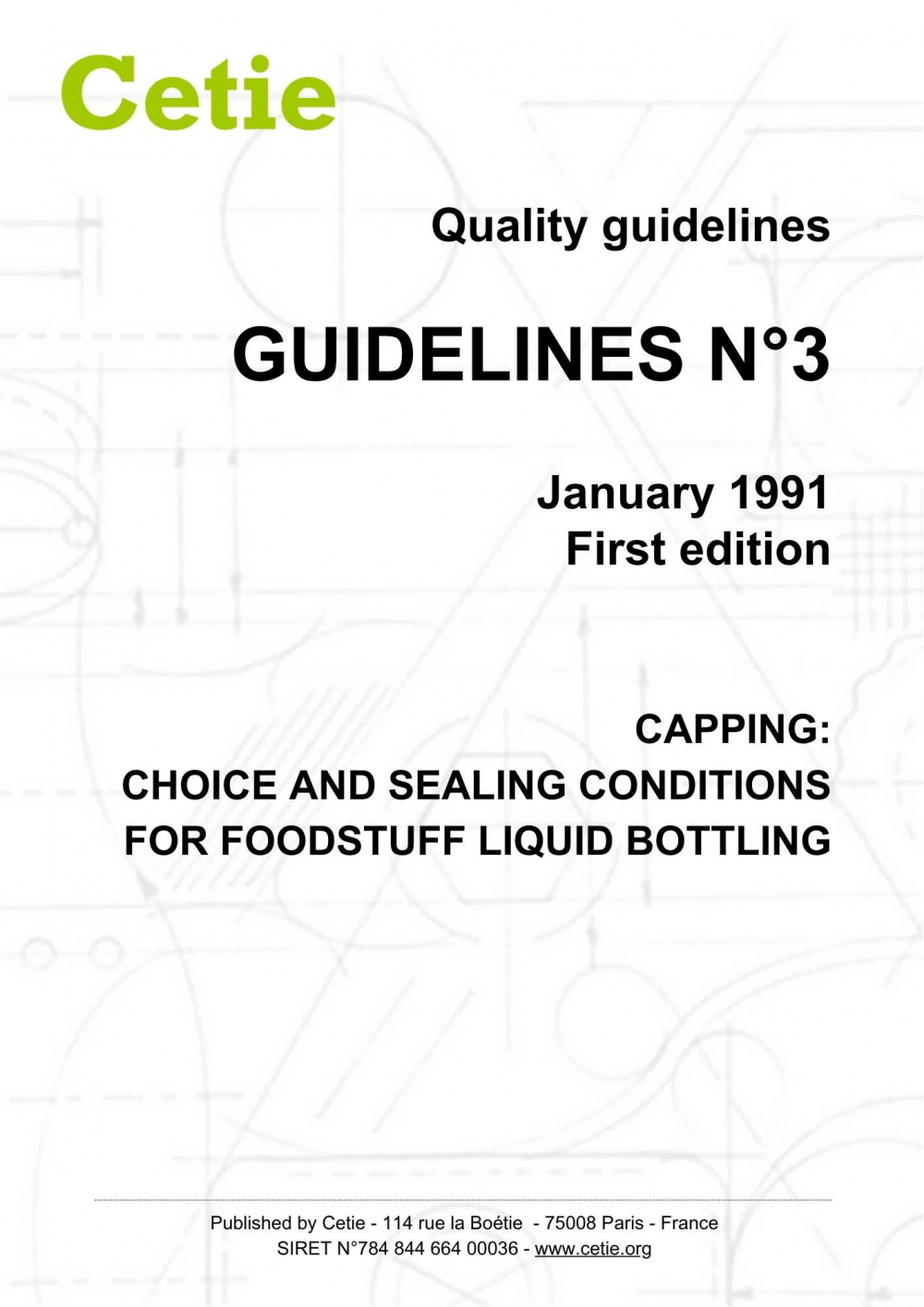Guidelines No. 3
First edition
Published on: 01/01/1991
Capping: Choice and sealing conditions for beverage bottling
Scope of application
Design and implementation of sealing for the packaging of non-dairy food products.
We have often found that some of the problems encountered on bottling lines stem from a lack of knowledge about the characteristics of the seals used. The sealing of a container is a technical operation that must be carefully analysed by the upstream functions of the bottling hall, and not left to the designer of the shape or decoration alone; the conservation of the bottled product, and sometimes the safety of the consumer, are at stake.
The range of products to be packaged is vast, as is the range of "seals". This study will therefore limit itself to answering the following question: "How do you create and implement a seal for the packaging of food products, excluding milk?", to assist in the development or evolution of a product, or establishing functional specifications.
In order not to favor any particular sealing method (especially as certain brands have sometimes become common names), we have based our analysis on the physical means used to create the sealing function, trying to define their specificity, their limits, and the means of implementing them.
In this study, we have deliberately left aside the specific issues relating to cork stoppers, which are being studied separately by a MINE technical committee within the inter-professional framework. A glossary, in Appendix 3, will help to clarify terms in italics that may lead to confusion.
A brief bibliography, in Appendix 5, will enable readers to deepen their knowledge of the subject.
We have often found that some of the problems encountered on bottling lines stem from a lack of knowledge about the characteristics of the seals used. The sealing of a container is a technical operation that must be carefully analysed by the upstream functions of the bottling hall, and not left to the designer of the shape or decoration alone; the conservation of the bottled product, and sometimes the safety of the consumer, are at stake.
The range of products to be packaged is vast, as is the range of "seals". This study will therefore limit itself to answering the following question: "How do you create and implement a seal for the packaging of food products, excluding milk?", to assist in the development or evolution of a product, or establishing functional specifications.
In order not to favor any particular sealing method (especially as certain brands have sometimes become common names), we have based our analysis on the physical means used to create the sealing function, trying to define their specificity, their limits, and the means of implementing them.
In this study, we have deliberately left aside the specific issues relating to cork stoppers, which are being studied separately by a MINE technical committee within the inter-professional framework. A glossary, in Appendix 3, will help to clarify terms in italics that may lead to confusion.
A brief bibliography, in Appendix 5, will enable readers to deepen their knowledge of the subject.
Table of contents
Introduction
1. Essential data required
2. Available options
3. Selection criteria
4. Overall selection
Annex 1. Different types of seals
A. Moulded plasticised seals
B. Stamped seals
C. Applied seals
D. thermoplastic inserted seals
1. Essential data required
2. Available options
3. Selection criteria
4. Overall selection
Annex 1. Different types of seals
A. Moulded plasticised seals
B. Stamped seals
C. Applied seals
D. thermoplastic inserted seals
Annex 2. Pressures developed inside the bottles
Annex 3. Glossary
Annex 4. Abbreviations of units
Annex 5. Bibliography
Annex 3. Glossary
Annex 4. Abbreviations of units
Annex 5. Bibliography
History
First edition: 01/1991
First edition: 01/1991
Contributors
BSN MERRY, CEBAL - ACTIVITÉ CAPSULES, PERNOD RICARD, SAINT-GOBAIN EMBALLAGE, SOCIETE GENERALE DES EAUX MINERALES DE VITTEL, ZALKIN.
Document under responsibility of working group:
Bottlers/fillers and glass manufacturers
WG chair: To be elected - -
This joint group aims to coordinate the production of documentation at the junction of the glass container production and bottling/filling. It includes good practices, the use and storage of glass containers, and quality management on bottling lines. This joint group also provides an opportunity for bottlers/fillers to open discussions on specific work items of the permanent glass groups
